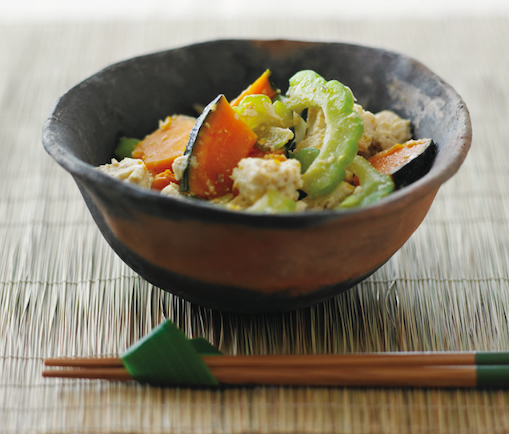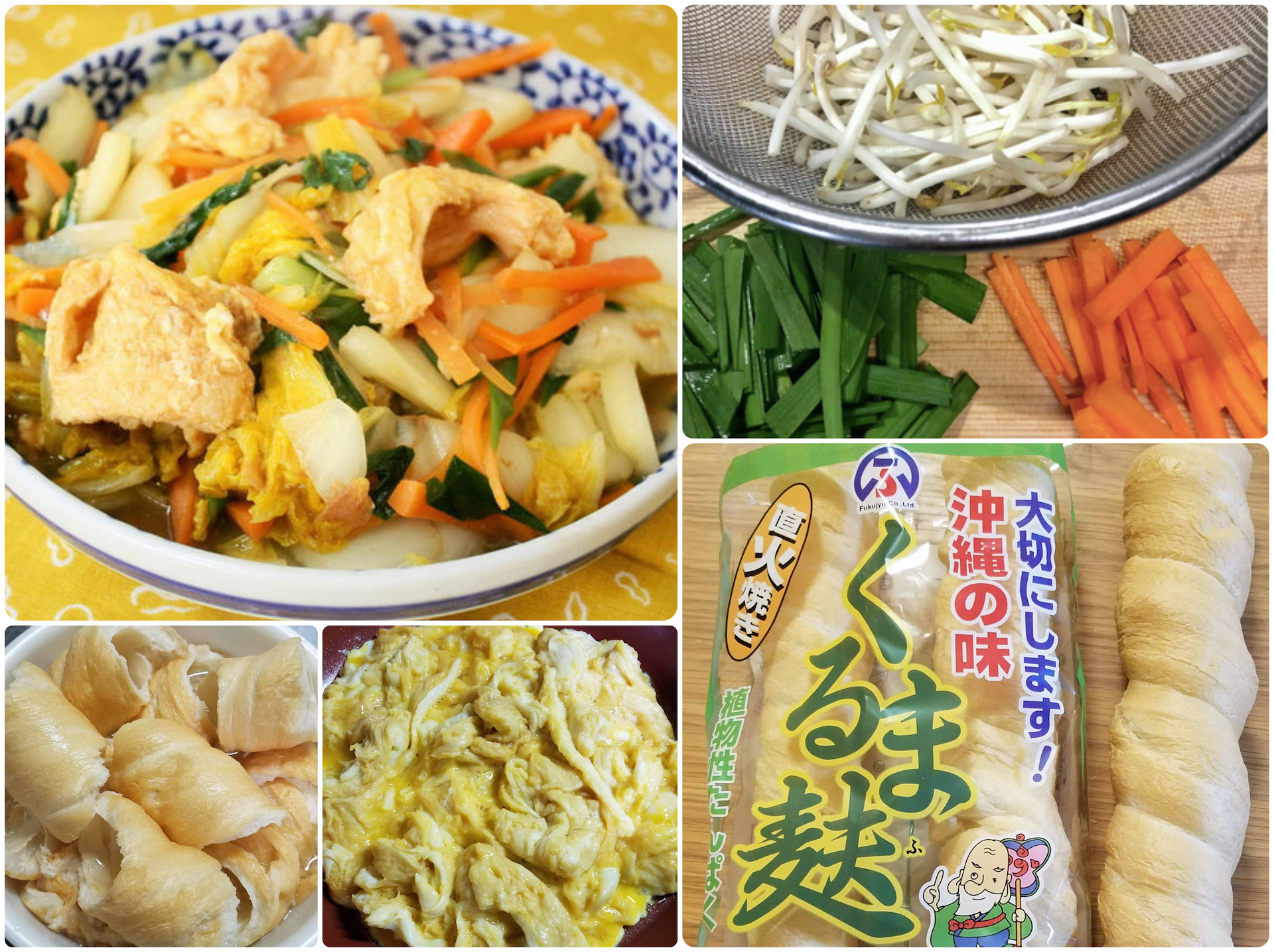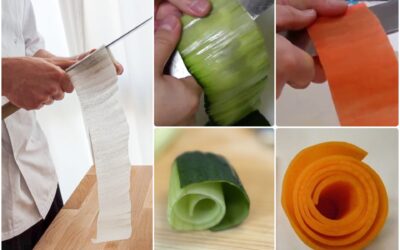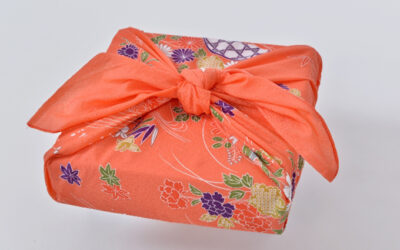
チャンプルー
PROJECT Champuru
This Kitchen PROJECT is about making champuru (a stir-fry that is a signature dish of Okinawa) in YOUR kitchen
Every household in Okinawa will have its own variation on the basic theme. A classic version made with bacon, tōfu, gōya, onions and eggs can be downloaded from the CHAMPURU Kitchen Culture blog post.

In my cookbook, KANSHA (page 104-106), I offer a vegan version of miso-glazed champuru made with kabocha squash and chunks of shimi-dōfu (frozen-then-defrosted, the tōfu takes on a meaty texture).
Photo above from KANSHA
© Leigh Beisch, styling by Karen Shinto. Vessel by Frederick Warren.

One of my goals as a teacher is to introduce ingredients and techniques that readers may not be familiar with — especially ones that can provide additional options for those who eat primarily (or exclusively) from the plant world. Okinawa’s champuru is a fine opportunity to discover kuruma-bu 車麩 (spiral-shaped sticks of dried wheat gluten), a plant-based source of protein.
Kuruma-bu is typically inexpensive and, because it is shelf stable, can be stored for months, even years, in a dark, dry, cool spot in your pantry — ready in a pinch when you want to add volume to a dish. Its spongy texture provides a pleasant meaty chewiness. Chunks or wheels of kuruma-bu absorb flavors from the foods with which it is cooked.
Download this recipe for FU CHAMPURU that includes A Guide to Cooking with kuruma-bu.
My August 2022 newsletter is all about champuru.




